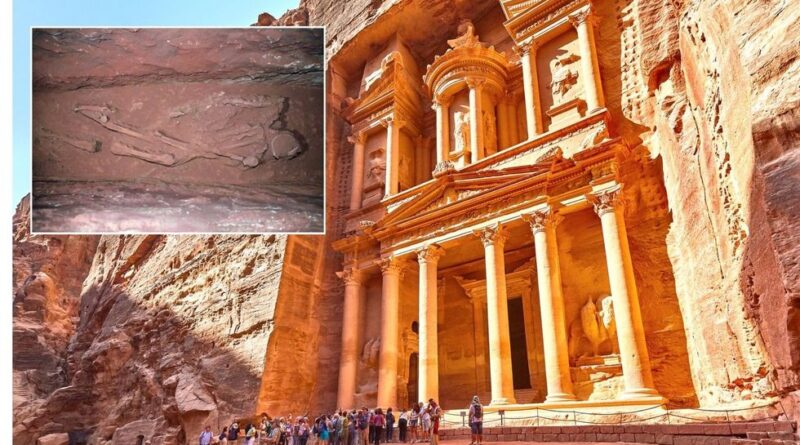Archaeologists uncover hidden 2,000-year-old tomb which could be key to solving centuries old mystery
A 2000-year-old tomb has been discovered in the Unesco world heritage site of Petra which archaeologists say could solve ancient mysteries about the city.
The joint US-Jordanian archaeological team located the tomb underneath Petra’s famous sandstone structure – the Treasury – which was featured in films such as Steven Spielberg’s Indiana Jones and the Last Crusade.
It is believed that the 12 well-preserved human skeletons were socials elite due to their tomb’s central position within the city.
The team also discovered bronze, iron and ceramic artefacts.
According to Dr Pearce Paul Creasman, executive director of the American Center of Research, more relics are expected to be found following a more thorough excavation.
An age-old theory suggests the Treasury was home to the pharaoh’s treasure because its of structural beauty and a decorative stone urn above the entrance.
Today, archaeologists suspect the Treasury was a tomb built by Aretas IV, a Nabataean king who ruled from roughly 9BC to 40AD.
The latest discovery supports the theory, as it is believed that the tomb predates the Treasury itself.
LATEST DEVELOPMENTS:
Scientists make incredible discovery of 8.5 foot long mega-millipedeMount Everest mystery finally appears solved 100 years after Andrew Irvine vanishedArchaeologists uncover ‘ancient pub’ in incredible discovery at Dover Beacon
The team dated the tomb to the first century BC using luminance dating, “which tells you the last time certain soils saw the sunlight”, Creasman said.
He added: “It is rare to find a tomb with human remains in Petra.
“So when you do find one, that becomes extremely valuable.”
Creasman hopes the new findings could give hints about the Nabataeans – who were first recorded in 312BC when they withstood an attempted invasion by Antigonus I Monophthalmos (Antigonus the One-Eyed), a former general of Alexander the Great.
“They just appear in the historical record and then it goes over a hundred years before we read about them in text again,” he said.
“By which time they have this fully-fledged society and Petra is being built in the sense that we know it today.”
“This is going to help us learn more about a shared, regional past. The Nabateans were a multicultural trading society who only worked because they united as a people. I hope they might be able to teach us something today.”

